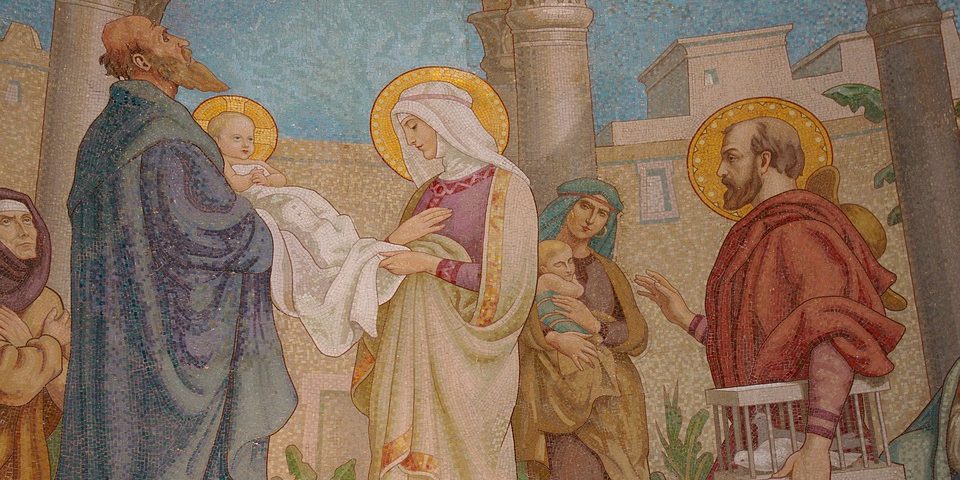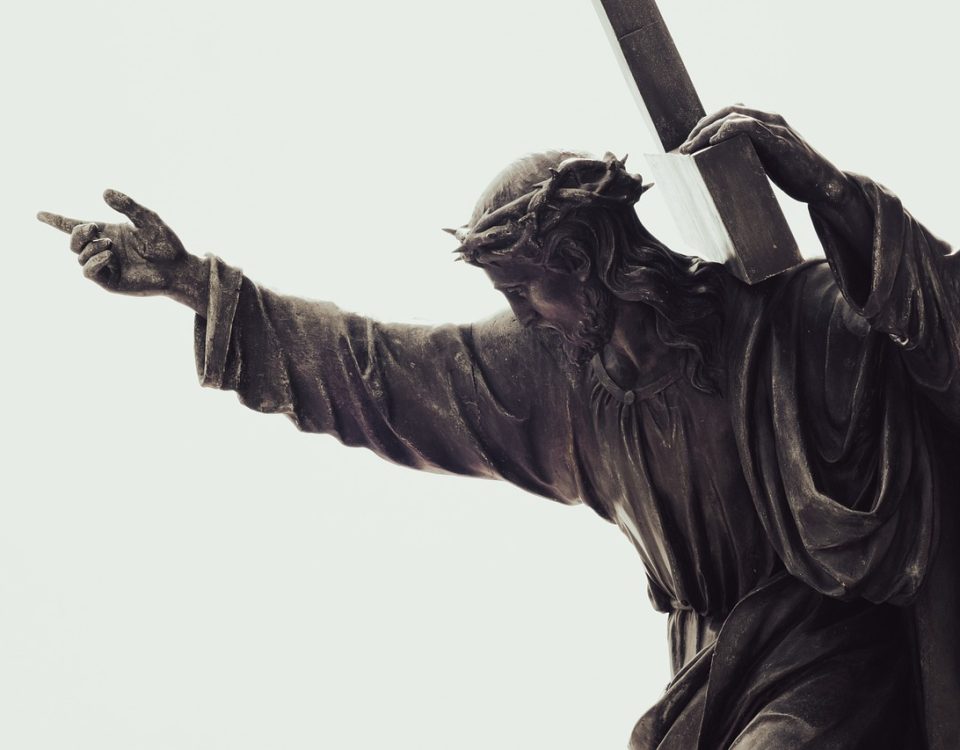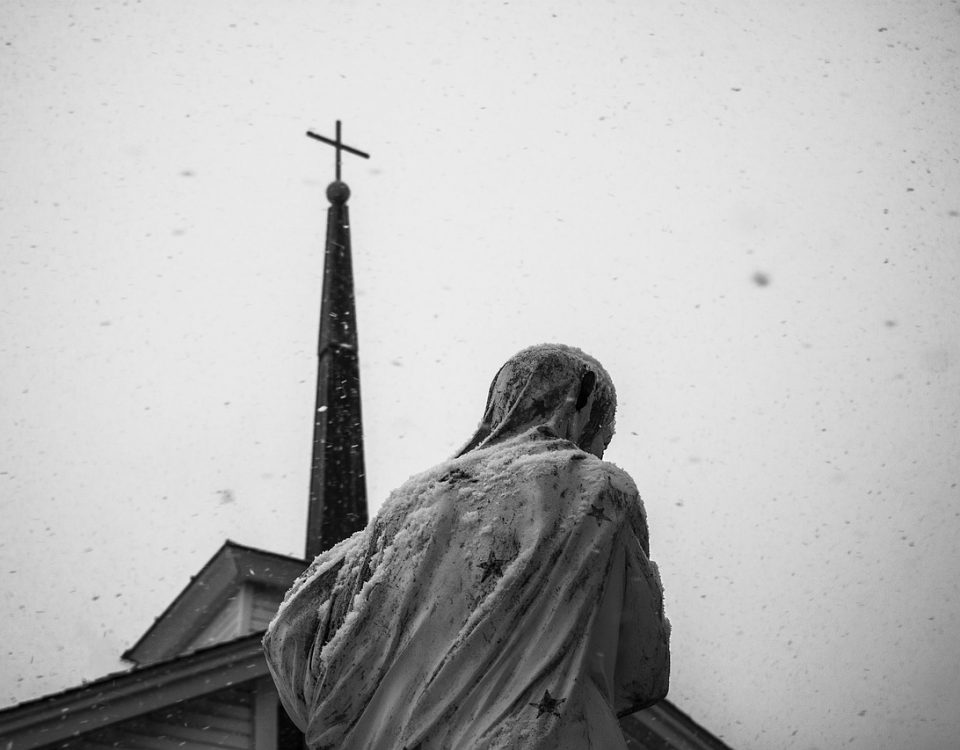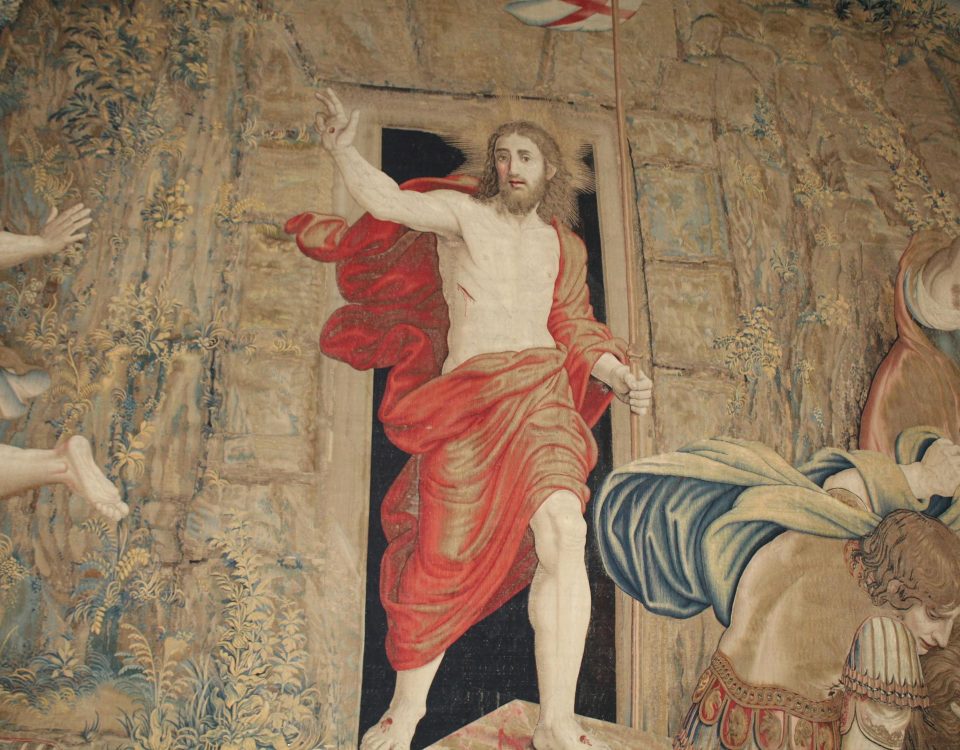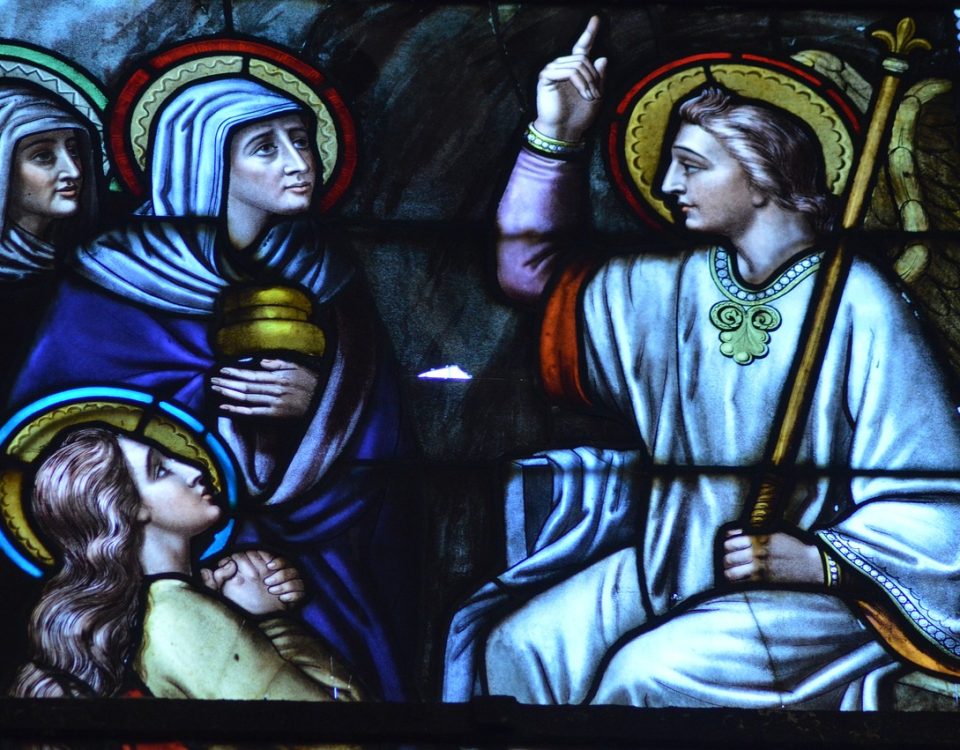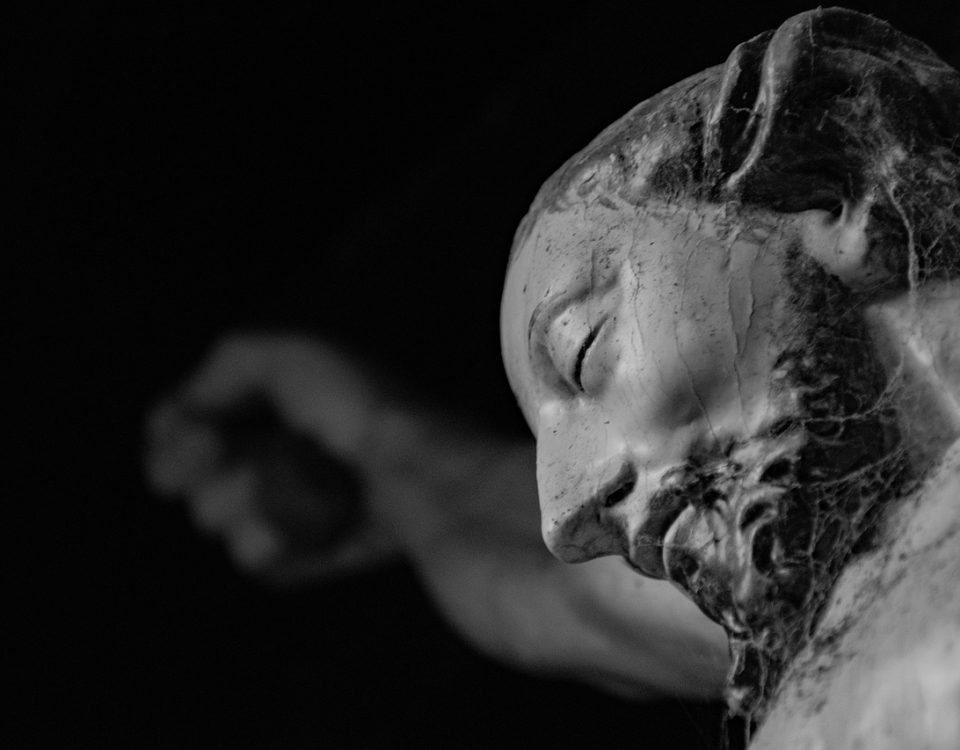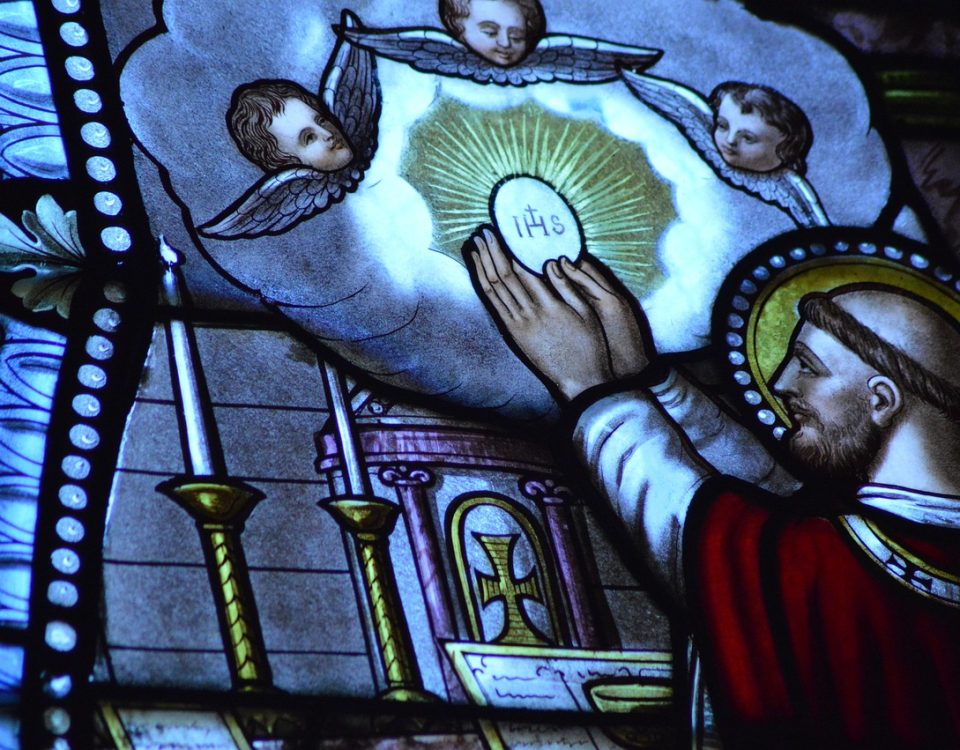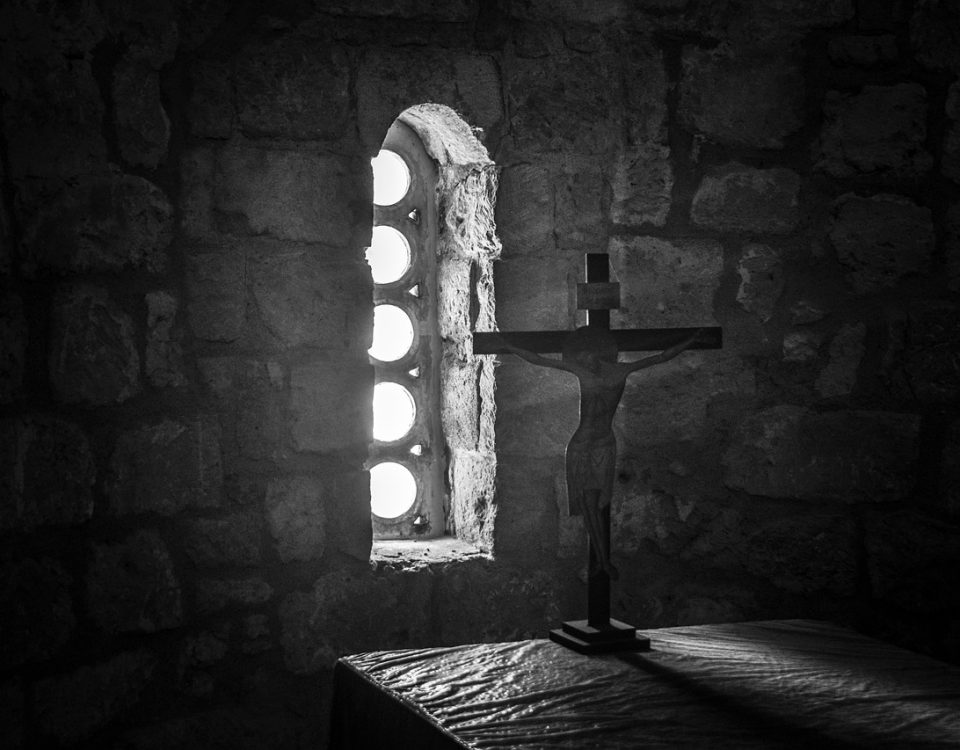There’s an old poem by Wendell Berry most parents, I think, will understand—good parents at least. It’s called “To My Children, Fearing for Them,” and it goes like this:
Terrors are to come. The earth
is poisoned with narrow lives.
I think of you. What you will
live through, or perish by, eats
at my heart. What have I done? I
need better answers than there are
to the pain of coming to see
what was done in blindness,
loving what I cannot save. Nor,
your eyes turning toward me,
can I wish your lives unmade
though the pain of them is on me.[1]
A poem written for his children, fearing for them, a fear every parent knows.
Long before the child is even born, parents learn to fear the world in a whole new way. Will the pregnancy go alright? Will the baby be okay? It’s a beautiful time of life, pregnancy, but it’s also forty weeks of worry. And it doesn’t end there. Newborns inspire a sort of apocalyptic anxiety unlike anything I’ve ever known before. A simple cold, for example, elicits nightmares of the worst kind of suffering that is certain to come. The pediatrician tells me not to worry, but what does she know? And these fears don’t ever abate, but rather evolve and grow. Once the child begins to crawl or walk, you begin to see your house for deathtrap that it actually is. You discover that none of your friends, even those with kids, have any sense of safety themselves because their houses are even worse deathtraps than yours. When the child goes to school, you worry about teachers, other parents, strangers, predators, bullies, sexting, depression, hormones, grades and goals, driving and on and on, praying simply that your kid survives the day. To be a parent is to worry, to fear the unknown as well as the known, barely trusting even those closest to you; it’s to worry over the littlest things like colds as well as the big things like the good of society, the health of the planet, war and peace. “Terrors are to come,” as Wendell Berry said: parents understand this fear. We worry about everything because we worry about our children, a sometimes terrorizing fear, which we wouldn’t ever let go of, born of that wonderful love, those beautiful little eyes, my children given to me by God himself, living gifts I’d be a fool not to worry over as much as love.
Today is the feast of the Presentation. Forty days removed from the feast of the Nativity, today’s celebration brings the Church’s great Christmas cycle to a close. Today we recall the Holy Family as they made their way to Jerusalem so that Mary could fulfill the Law regarding purification and also in order to offer the infant Jesus to God, in accord with the prescription set forth in Exodus.[2] Today we celebrate this poor but faithful Jewish family, finding in their devotion the fulfillment of all of Israel’s hope, salvation and glory for the people of the Covenant and light for the Gentiles.[3]
It’s an ancient feast. Egeria, the fourth century Spanish pilgrim, describes an elaborate celebration in Jerusalem (as wonderful as Easter, she said), which is the first we hear of this feast in annals of Christian history. The same passage we hear today from Luke was read then; after which, she said, “[a]ll the priests, and after them the bishop, preach.”[4] (Could you imagine sitting through all that?) Over the centuries the celebration of this feast spread all over the Christian world, thrilling the medieval mind, it seems, peasant and nobleman alike. “Candlemas” is what the laity came to call this feast. It was a day full of ritual and piety and mystery and legend. Medieval parishioners in England, and even well after the Reformation, would bring their candles in procession to the church, offering a penny to the priest in exchange for a blessing, their holy candles now sacred enough to protect against disaster either natural or demonic. The legend of Saint Brendan said that on this feast Judas was allowed out of hell, just for a short time, to sooth his torments in the sea.[5] This was once a magical holy day, a sacred day on which gospel truth and the sometimes superstitious piety of common folk were happily married in the colorful rituals handed down from generation to generation.
And even though veiled in the magical customs of common folk, the simple teaching of the gospel could always be found nearby, or better within, the piety of simple people. Carrying candles into the church, for instance, was a ritual everyone knew signified the infant Jesus being carried into the Temple by his Blessed Mother and chaste father—that this infant God was the true light of the world. The very act of processing from the village into the church, which was a common custom on this day, symbolized the infant Messiah’s first visit into his temple, a visit which itself prefigured Jesus’ final entry into the Temple he was to destroy and make his body by dying, letting the water and the blood flow from his body on the cross (Ezekiel’s true vision).[6] This has always been a feast of rich symbolism, deeply biblical, and one which prepares us for the great drama of Lent and Holy Week, for the drama of Christ’s death and the joy of his resurrection. Or, at least this is what this feast used to mean and used to teach before we Christians got distracted by lesser things like Super Bowls.
Yet there are still pearls of wisdom to be had, lessons for those with faith. Setting aside symbolism, ritual, and even theology, let’s meditate for a moment upon the very human event at the heart of this feast: upon Mary and Joseph, new parents that have brought their baby boy into the Temple to dedicate him to God. Like all parents, they must’ve been filled with joy, exhaustion, and wonder. And there they meet an old man, Simeon, and an old woman, Anna. She begins to tell everyone she sees about this child. “He’s special,” she says. He must have something to do with “redemption,” she thinks; this holy old lady who had lived most of her life in fasting and prayer. Simeon says the same: this child is the “consolation of Israel,” “salvation,” “light,” and “glory.” But then, right after that, he turns to Mary, and perhaps with a more somber tone, says, “this child is destined for the fall and rise of many in Israel, and…will be contradicted—and you yourself [Mary] a sword will pierce.”[7] Now we don’t really know what this means. It is some sort of prophecy of hope and pain. Perhaps it refers to the pain she will bear seeing her son crucified and mocked. Some early fathers thought it referred to her sinless but nonetheless real struggle to accept what would one day come to pass for her only son.[8] How easy would it be for you to give up your son to a plan like that, divine mission or not? It would be hard, no matter how holy you were. Others see here Mary’s imitation of her own son. When Jesus accepted his Father’s will, he accepted the cross and death; and so here too, Mary, in accepting the Father’s will in becoming the Mother of his Son, embraces all of it, the pain as well as the glory.[9] And perhaps this is the lesson for us. This is what we’re to see and learn today, that the holiness of the Holy Family consisted precisely in this: they accepted the will of God for their son, not fighting it but accepting it, realizing that their son was also his Son.
But what does this mean for us? Will Willimon, former Dean of Duke Chapel, used to talk about angry calls he would occasionally receive from parents, always with the same type of complaint. “We sent Suzy to Duke with her head on straight,” the angry parent would begin. “She was to major in economics and go on to law school. But she has become so involved in the Wesley Fellowship that she has now decided she is going to become a missionary to Honduras. How could you let this happen? You have ruined her life.”[10] Christian people actually said that: “she is going to become a missionary…You have ruined her life.” Mary said, “may it be done to me according to your word,” and for the love of it she embraced the sword which pierced her heart, but we say, “You have ruined her life.”[11] What does the feast of the Presentation mean for us today, we parents especially? Today we celebrate Mary and Joseph and their willingness to give themselves, and also their son, to the will of God, accepting both the pain and the glory that comes with being faithful. And are we simply here to admire the scene, purchase for ourselves a little religious feeling? Or, should we ask ourselves how we too might be changed and made a bit more willing to take up the challenge of faith and not just the comfortable bits. Parents, if we are to be faithful, we have to ask every day what the will of God is for our family, and we have to be honest with ourselves and with God. We have to understand that our children are not our own, but rather are gifts from God himself, given to us for a purpose, his purpose and not ours. And that purpose is to see to it “that the divine life which God gives them is kept safe” as the Church reminds new parents.[12] “Parents must regard their children as children of God,” the Catechism says, and that means we parents must allow the will of God to rule in our homes and in the lives of our children.[13] We must let them hear and accept the will of God for themselves in their lives, and not get in the way with our own ambition, formed as it so often is by our own idolatries and our own regrets because the will of God is so much better than any parent’s ambition.
My son Pete is nine–years-old: I told him he ought to go into finance. But he said, “Daddy, that may not be God’s will for me?” “But what am I going to do about retirement?” I said. “That’s your problem,” he said. It’s God’s will, not mine, that matters; Peter’s right! If you’ve had your child baptized, then you have already agreed to this. Today then is simply an invitation to renew your vocation as parents. Yes, we parents are fearful, and rightly so. Wendell Berry was right: “Terrors are to come.” But we mustn’t fool ourselves into thinking we have all the answers as parents; rather, we must remember that there is something called the will of God, and it is a will for us and a will for our children, and it is our only hope, the only freedom we will ever find from the fear which threatens to steal our souls.
Here we stand, each one of us, in the temple of God. Simeon points to the Christ in our hearts, and in the hearts of our children, and he tells us the path ahead is glorious, but painful too. What will you do? How will you respond? If religion for you is simply a matter of emotional entertainment or cultural habit, then you won’t see the point in asking these questions. If you’ve merely given your children the sacraments but not a living faith; if, say, you’d never miss a lacrosse game on Sunday or a soccer tournament out of town, but you can’t remember the last time you’ve been as a family to Mass, then all of this (and, in fact, the entire Catholic faith you claim to value) will make no sense whatsoever. If, however, your religion is real, then you will see the point and you will ask what the will of God is for you and your children. And only then you will begin to see the same light Simeon saw, shining now upon you and upon those you love.
[1] Wendell Berry, “To My Children, Fearing for Them” (1968)
[2] Leviticus 12:1-8; Exodus 13:1-16
[3] Luke 2:30-32
[4] The Pilgrimage of Egeria III.4
[5] Eamon Duffy, The Stripping of the Altars, 16
[6] Mark 13:2; John 19:34; Ezekiel 47:1-12
[7] Luke 2:25-35
[8] Bertrand Buby, Mary of Galilee III.227
[9] Hans Urs von Balthasar, The Threefold Garland, 70
[10] Stanley Hauerwas, “The Radical Hope in the Annunciation,” The Hauerwas Reader 511
[11] Luke 1:38; 2:35
[12] The Roman Ritual
[13] Catechism of the Catholic Church 2222
© 2021 Rev. Joshua J. Whitfield
